How to prune roses - only useful tips and tricks
Growing roses - the task is quite difficult, nevertheless, it is difficult to find a garden plot on which at least two or three rose bushes did not grow. The main factor affecting the beauty and splendor of the flowering of roses is their correct pruning.
Content:
- Benefits and timing of pruning roses
- Trim types: short, medium and long
- Correct pruning
- Care after pruning
Benefits and timing of pruning roses
Regular and correct pruning roses allows you to give the bush the desired shape, increases the lifespan of the plant. Thanks to pruning, a large number of new young shoots and leaves are formed, which has a good effect on the viability of the bush. Many buds are formed on new shoots.
Roses are pruned in spring, summer and fall.
The most favorable time for pruning roses is spring:
- As soon as the buds begin to swell in the lower part of the rosebush (April 25 - May 10), you can safely proceed to pruning.
- If the shoots are cut too early, spring frosts can kill them, and bloom comes much later. Late pruning, in turn, also does not have a very good effect on roses: all the plant's strength goes to the formation of new shoots, which weakens the plant and reduces flowering.
- Spring pruning is essential for almost all types of roses. After harvesting the covering material, all non-living shoots are removed, and already when the buds are swelling, the main pruning is done.
- If the bush freezes in spring, the damaged shoots (with a brown core) must be pruned again. If the buds develop well below the cut, the shoots are trimmed to the first living bud.
Summer pruning It is carried out purely symbolically - faded buds are removed, which stimulates the re-flowering of roses of those varieties that are typical. In autumn, when pruning, you need to remove excess, dead and undeveloped shoots, as well as shoots and leaves infected with diseases. Roses are shortened to the height of the shelter.
There are different pruning times for different varieties:
- In late summer or autumn at the end of the flowering period - climbing multi-flowered roses.
- In the spring - standard, spray, other types of climbing roses.
Trim types: short, medium and long
Short or strong pruning is done at planting seedlings in spring, to rejuvenate old rose bushes and to strengthen weakened or diseased pests roses. Short pruning is done at a distance of 2-4 buds (about 15-20 centimeters) from the base of the shoot. A short cut reinforces well root system, but too frequent strong pruning, on the contrary, weakens the plant. This type of pruning cannot be done on roses with flower buds at the top of the shoot and on floribunda varieties.
Medium to moderate pruning is done to stimulate early and abundant flowering. Shoots are cut at the level of 5-6 buds. This type of pruning is the most common method of forming a lush flowering bush. Long or light pruning consists of slightly shortening the length of the shoots in order to remove the faded buds in the summer. For certain types of roses, this type of pruning is the main one for several seasons, after which a short pruning is done to renew the bush.
It is recommended to use a combination of different types of rose pruning to achieve continuous flowering.
It happens that after some time after spring pruning, a defect in work is found. If you worked with a poorly sharpened tool, the cuts remain crushed. It happens that the instrument was poorly disinfected, and the shoot got sick. In this case, you need to do unscheduled pruning: cut the crushed shoots to the first bud, remove diseased and dead ones.
Correct pruning
Pruning it is necessary to carry out only with a sharply sharpened tool, so the cut place should be smooth. A torn, uneven cut often causes the death of the shoot.
To prune a rose bush you will need:
- Garden saw.
- Long-handled garden shears.
- Garden knife.
- Secateurs-side cutters of two types: for trimming thin and thick shoots.
- Thick gloves.
- Garden var or "Runnet" pasta for processing cut points.
Rules for pruning roses:
- Dead, weak and diseased branches are removed first.
- The branches growing inside the bush are also removed.
- In climbing and park species, only old shoots are removed.
- The shoot is cut as close as possible (no further than 0.5 cm) to the growth bud, which is formed in the leaf axils.
- The cut is made at a slight slope from the kidney.
- If the core of the shoot is brown, the branch is shortened to a healthy white core tissue.
- The place of the cut must be covered with garden varnish.
- In grafted roses, wild shoots are removed that grow from the roots and below the place vaccinations.
- In order not to shade the center of the bush, it is recommended to prune to the outer bud. In some types of roses with drooping shoots, pruning is done on the inner bud to stimulate the vertical growth of the bush.
- The buds located higher germinate faster. In the lower part of the shoot are dormant, immature buds, pruning on which slows down the development of the shoot and the formation of buds.
- If several shoots are formed from one bud, you need to leave one of the strongest. Sick, weak and dead shoots should be cut to soil level or to a healthy core.
- When crossing two shoots, one of them must be cut below the crossing point. In some types of roses (for example, climbing roses), this is quite difficult to do. However, friction between branches should be avoided whenever possible.
In June, it is advisable to finish all pruning, since young shoots that have not ripened by autumn can freeze in winter and cause diseases the whole bush. When pruning roses, ensure that there is enough distance between the shoots to allow sunlight and air to penetrate the leaves. Keeping the spacing correct is an excellent prevention of diseases such as rust, powdery mildew and black spot.
There are some peculiarities in summer pruning: it is important not just to remove the faded bud by pinching. In this case, the new shoot will grow tall and thin and weak.
The flower is removed before it loses all its petals. You need to cut the bud at a distance of half a centimeter above the new eye, then the young shoot will be strong.
To prevent spread diseases, you need to work only with a clean (disinfected), sharpened tool, and burn the cut off shoots.
Care after pruning
After pruning the bushes, you need to slightly huddle and dig up the soil near the bush for better air penetration. The rose bush should be sprayed with 1% Bordeaux liquid solution or 1% copper sulfate solution.
Fertilizing roses:
- After spring pruning, before leafing out, it is recommended to do top dressing ammonium nitrate: for 1 square meter - 40 g.
- It is advisable to repeat the feeding before the second flowering. Fertilizers applied to moist, loose soil, if the soil is dry, it needs to be watered.
- Instead of ammonium nitrate, you can take a complex mineral fertilizer at the rate of 30 g per 1 square meter.
For varieties of roses in which the shoots grow strongly in height, a support should be installed in advance and the trimmed branches should be tied to it. After pruning before bud break, it is recommended to mulch the soil between the bushes with peat or humus. The soil around the bush must be loosened after each glaze... And the regular mulching will greatly facilitate the care of roses, reducing the number of watering.
Mulching the soil significantly improves the properties of the soil, increases its air permeability and contributes to the preservation of nutrients.
It is extremely important 5-7 days after spring pruning to process (spray) roses special drugs from pests and diseases. RoseClear can be used as a prophylactic agent. Spraying should be repeated after flowering and by the end of the growing season.
More information can be found in the video.



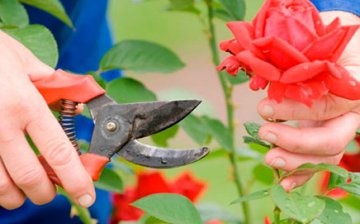
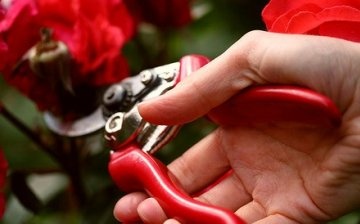
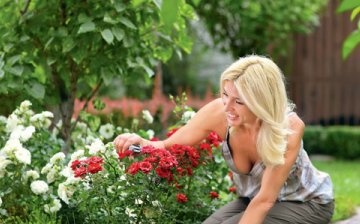
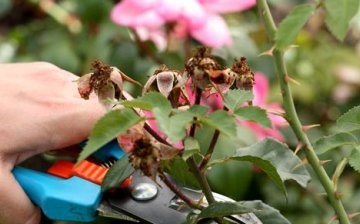






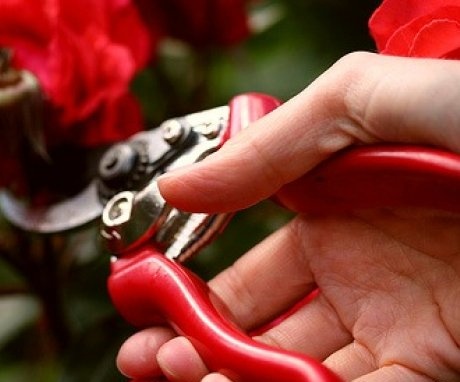
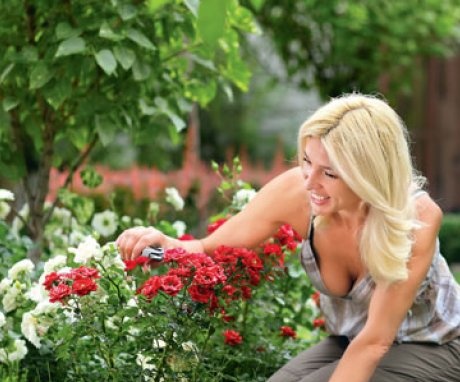
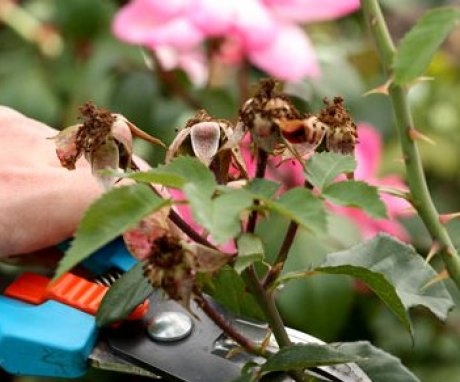
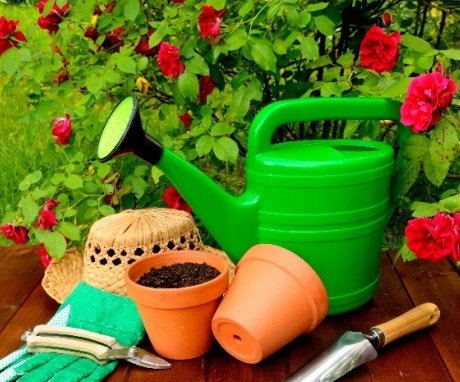
Usually pruned in the fall, it turns out to be optimal to do this in the spring. I wonder if, in connection with the warm winter, the buds began to swell at the 20th of March, is it possible to do pruning now?